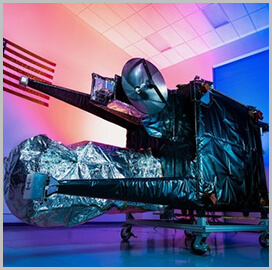NASA halted Monday the first uncrewed flight test of the Space Launch System and the Lockheed Martin-built Orion spacecraft due to an issue with one of the rocket’s engines. The space agency
MoreThe U.S. Air Force Research Laboratory Space Vehicles Directorate has collaborated with NASA, the Georgia Tech Research Institute and DuPont de Nemours on a scientific cargo that launched aboard a SpaceX spacecraft.
MoreThe Defense Innovation Unit, U.S. Space Force and Air Force Research Laboratory have jointly released a report outlining recommendations to develop a space industrial base that will retain U.S. dominance in commercial,
MoreA space vehicle developed by Boeing‘s Millennium Space Systems subsidiary for the U.S. States Space Force’s Space Systems Command is now online and is being operated by the Naval Research Laboratory’s Blossom
MoreThe Defense Advanced Research Projects Agency has awarded SpaceLink, a space technology company working in data connectivity, with a contract award for research and development activities. Through the contract and as part of
MoreThe U.S. Space Force will conduct an industry day on Oct. 25 and 26 to solicit industry comments on the planned acquisition of spacecraft for science and technology experiments. The Innovation and
MoreNASA has selected four mission proposals for the Explorers Program to conduct study on exploding stars, distant clusters of galaxies and nearby galaxies and stars. The space agency said Friday two studies
MoreSpace Systems Command’s Space Sensing Directorate is seeking information on a planned migration of existing Space-Based Infrared System assets from a legacy ground command and control system to a modern platform. According
MoreNASA is transporting its Space Launch System to its launch pad at Kennedy Space Center in Florida following the completion of final tests of the rocket’s flight termination system, TechCrunch reported. The
MoreThe U.S. Space Force formally took over the U.S. Army’s military satellite communications mission, marking the consolidation of all Department of Defense satcom functions under one service branch. Lt. Gen. Daniel Karbler,
More




